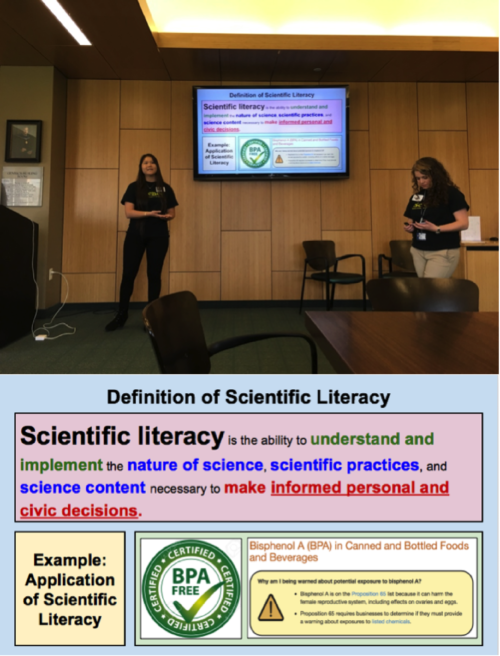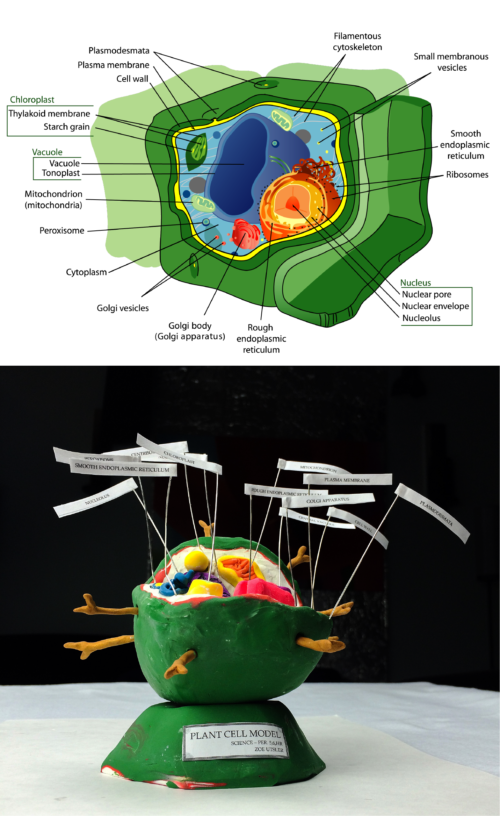Science literacy: the role of conceptual models in the Next Generation Science Standards
Brianne Walsh ·During the month of April, I had an opportunity to present at Scientific Literacy: A conference for reform-minded science educators, hosted by graduate students at the University of Rochester Warner School of Education. As New York State adopts the Next Generation Science Standards (NGSS), this one-day conference for preservice and current science teachers aimed to evaluate science teachers' opinions about teaching scientific literacy, encourage them to incorporate literacy practices into their lessons, and provide resources to support their efforts in fostering scientifically literate students.

In partner with Patrick Bond, a master’s student within the Get Real! Science program at Warner, we discussed using conceptual models as a tool for teaching science in the context of the new NGSS-integrated New York State Science Learning Standards. Within these new standards, a greater emphasis is placed on using modeling as a tool to develop student understanding. Giving students the opportunity to work with, make, critique, and revise conceptual models of natural phenomena makes both their thinking and their misconceptions visible.
In a traditional classroom, models are used to explain a concept or phenomenon. Take for example the traditional teaching method for a plant cell: students are shown a model of a plant cell, memorize the organelles and cell parts, and then recreate the cell using materials they find at home. In this process the model is a demonstrative tool; students are reliant on the educator to explain the model in the “sage on the stage” tradition. However, with the Next Generation Science Standards, the co-creation of models by students takes a new precedence.

Within the new standards, students are provided the skills needed to create and critique models of natural phenomena. Students need to be able to create, to manipulate, and to practice. It is important that science educators encourage the creation of models as a way that students can demonstrate and share knowledge, and co-construct an understanding of scientific ideas. The process of creating models can provide insight, clarify thinking, aid in communication, and identify knowledge gaps. They are tools that students can use to develop and demonstrate their understanding.
Pat and I introduced the game “Conceptionary” to the teachers, as a tool they could use with students to begin developing models. While this method may not be appropriate for the plant cell example described above, it can be used to have students develop an understanding of complex processes. We had the teachers play two rounds of Conceptionary, and then had a brief discussion regarding the outcomes and potential uses in the classroom.
One concept that stood out to me was the importance of prior knowledge, an educational theory related to James Paul Gee's work on situated learning. All students come to a classroom with different pre-existing knowledge, skills, beliefs, and attitudes, which will impact how they process and retain new knowledge. Modeling allows students to integrate this prior knowledge and experience into their learning. It allows them to connect more directly to content, making the learning even more relevant when students have the opportunity to integrate their prior knowledge.
Conceptionary involves handing participants a blank piece of paper, which can often be intimidating even if you are an experienced researcher with a broad knowledge of a topic. We discussed the importance of making this blank piece of paper more approachable, whether through providing key words or a background, or having a group work together. Many of teachers described the importance of concept mapping in their lesson plans, and we discussed incorporating the creation of conceptual models (diagrams) and using a “conceptionary”-like approach to aid in their efforts. I am excited to follow up with the teachers to see if this has provided a useful tool in their teaching, as states continue to move forward in adopting the Next Generation Science Standards.